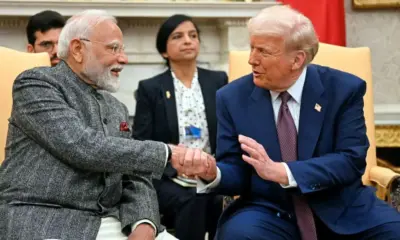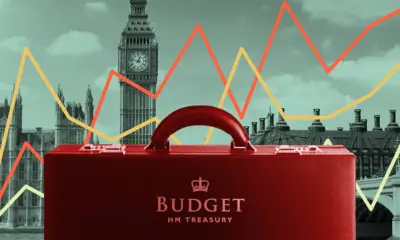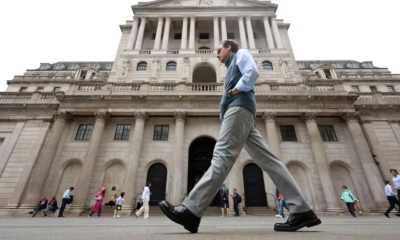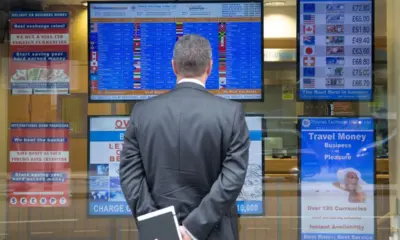Business
Imports Surge Pushes UK Trade Gap to New Highs
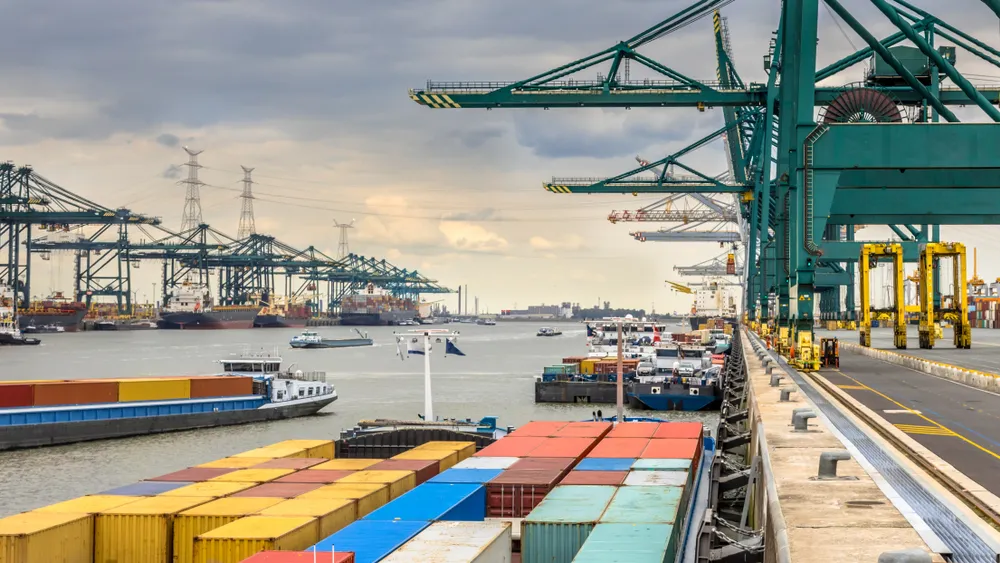
Introduction
The United Kingdom’s trade deficit has widened to its largest level in nearly three years, driven by a surge in imports of energy, machinery, and consumer goods. New data from the Office for National Statistics reveals that the total trade gap reached £25.3 billion in the most recent quarter. While exports have held relatively steady, import growth has outpaced them significantly, reflecting persistent domestic demand for foreign goods and higher global prices.
The figures underscore the economic challenges facing policymakers as they try to balance growth, inflation, and competitiveness. A weaker export performance combined with rising import costs puts additional pressure on the pound and complicates the Bank of England’s efforts to manage inflation. Businesses reliant on global supply chains are feeling the strain as logistics costs remain elevated and geopolitical uncertainty affects trade routes.
Rising Import Volumes
The increase in imports has been broad-based, spanning several key sectors. Energy imports saw the largest jump, rising by more than 12 percent compared with the previous quarter. Although wholesale gas prices have stabilized from last year’s peaks, Britain continues to rely heavily on imported energy to meet domestic demand. The reduction in North Sea output and seasonal demand for heating have amplified import requirements.
Machinery and transport equipment also contributed to the widening trade gap. Strong demand from the manufacturing and construction sectors has boosted imports of industrial components, vehicles, and electrical equipment. Consumer goods, including electronics and clothing, remain resilient as retailers rebuild inventories ahead of the holiday season.
Economists note that while robust import activity indicates steady domestic consumption, it also highlights structural vulnerabilities in the UK economy. The country’s dependence on imported energy and goods leaves it exposed to global price fluctuations and currency volatility.
Exports Show Limited Growth
Exports have shown only marginal improvement. Goods exports increased by just 0.6 percent, with strong performance in pharmaceuticals and aerospace partially offset by declines in automotive and food shipments. Services exports, traditionally the UK’s strength, grew by 1.8 percent but at a slower pace than expected.
The services sector, which includes finance, technology, and consulting, continues to underpin Britain’s trade position. However, analysts warn that competition from emerging financial hubs and regulatory divergence following Brexit could constrain future growth.
Weak demand in Europe, the UK’s largest trading partner, has also played a role. Sluggish economic conditions across the eurozone and currency fluctuations have reduced appetite for British goods. Exports to the United States and Asia have performed better, but not enough to offset declines elsewhere.
Impact of Energy Prices
Energy imports remain the most volatile component of the trade balance. Although gas prices have eased compared with last year, they remain well above historical averages. The UK’s limited storage capacity forces suppliers to buy energy on international spot markets, making the country vulnerable to sudden price swings.
Oil imports have also risen as refineries increase production to rebuild inventories. Analysts say global supply disruptions, particularly in the Middle East and Eastern Europe, have kept prices elevated. For households and businesses, the impact is visible in higher utility bills and transportation costs, which continue to feed into inflation.
The government has pledged to accelerate investment in renewable energy and nuclear power to reduce dependency on imported fuels. However, progress has been slower than planned, and domestic generation still falls short of demand during peak periods.
Currency and Market Reaction
Financial markets reacted cautiously to the trade data. Sterling weakened slightly against the dollar and euro as investors digested the widening deficit. A larger trade gap typically increases the need for external financing, raising concerns about capital inflows and the balance of payments.
Bond markets showed limited movement, suggesting that investors expect the Bank of England to maintain its current monetary stance. Analysts say that while the trade gap adds to inflationary pressure through import prices, the underlying weakness in exports reinforces the case for caution on interest rates.
Stock markets saw mild declines in export-heavy sectors such as manufacturing and mining, while energy companies gained on expectations of sustained demand. The data highlight the complex interplay between trade, currency stability, and monetary policy.
Business and Policy Reactions
Business groups have called for targeted measures to boost export competitiveness. The British Chambers of Commerce and the Confederation of British Industry have urged the government to provide clearer support for exporters, particularly small and medium-sized enterprises. They are advocating for simplified customs processes, improved trade finance access, and renewed diplomatic engagement with key markets.
Firms also want the government to address supply chain bottlenecks. Many manufacturers still face delays due to port congestion and transportation costs. While global shipping prices have eased since 2022, logistics remain more expensive than before the pandemic.
The Department for Business and Trade has outlined plans to expand trade missions in Asia and North America. Officials say new agreements under negotiation could open opportunities in emerging markets. Still, critics argue that such efforts will take time to yield measurable results and that short-term relief for exporters is limited.
Structural Factors Behind the Deficit
Economists point to structural challenges that have long affected the UK’s trade balance. The country imports far more manufactured goods than it exports, reflecting a long-term decline in industrial capacity. Meanwhile, the services sector, though strong, cannot fully offset the deficit in goods trade.
Productivity gaps and supply chain inefficiencies contribute to the imbalance. High energy costs and regulatory complexity have discouraged investment in manufacturing. Efforts to rebuild domestic production capacity, including through green industry incentives, are under way but will take several years to bear fruit.
Exchange rate movements also play a role. While a weaker pound can make exports more competitive, it simultaneously raises import costs, particularly for energy and raw materials. This dynamic often limits the benefits of currency depreciation.
Outlook for the Coming Year
Looking ahead, economists expect the trade gap to remain wide through the next quarter. Continued strength in imports, combined with only gradual improvement in exports, suggests limited near-term narrowing. However, a potential easing of global supply chain pressures and stable energy prices could offer some relief
Policymakers will watch closely for signs that the imbalance begins to moderate as inflation slows and domestic demand stabilizes. The Bank of England’s future interest rate decisions will also influence trade dynamics by affecting exchange rates and borrowing costs.
Conclusion
The widening of the UK’s trade deficit highlights the country’s complex economic landscape. Strong import demand reflects ongoing resilience in consumer and business spending, but it also exposes structural weaknesses in export capacity and energy dependency. Addressing these challenges will require coordinated efforts across fiscal, monetary, and industrial policy
Boosting domestic production, diversifying energy sources, and strengthening trade relationships are essential steps toward a more balanced economy. Without decisive action, the UK risks continued vulnerability to external shocks and currency fluctuations.
The current trade gap is both a warning and an opportunity. It underscores the need for long-term strategies that enhance productivity, competitiveness, and sustainability in a global marketplace that continues to evolve rapidl

